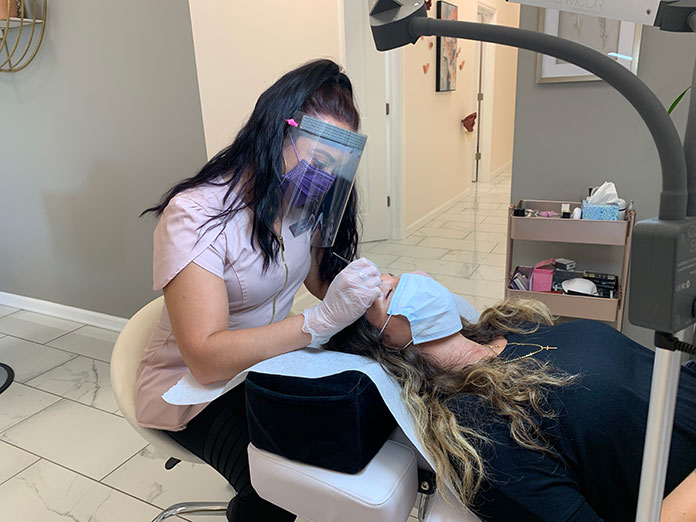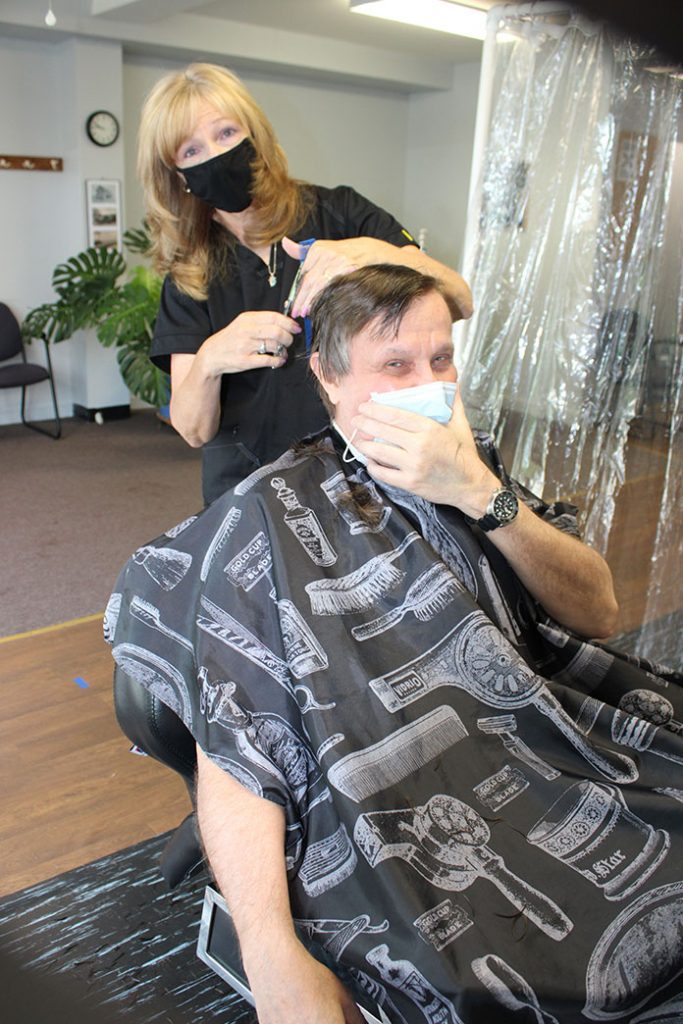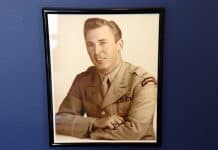
NEW JERSEY – Barbershops, hair salons and wax bars among others finally reopened their doors and took customers after months of being closed due to conditions of the coronavirus.
As the state entered phase two of its reopening plan directed by Gov. Phil Murphy, barbershops and related businesses reopened on June 22 but it wasn’t business as usual by any stretch.
New protocols including appointments only, temperature checks of clients, questions to customers and regular disinfecting of areas and instruments were part of what each business each faced.
Lorraine Kaminski, long-time owner of Lorraine’s Barber Shop in Brick off Hooper Avenue, said she was happy to be back open but noted that the conditions required will be challenging.
She has been running the business since 1984 but never thought she’d see anything like what has greeted her and other businesses like hers. But reopening is certainly an improvement from when the COVID-19 shut down began.
“In the beginning there was just nothing and then they came out with that payment protection program so I did pay my employees every week and I applied to the payment protection program which finally came through. It wasn’t a lot of money but at least it was something that I could use to pay all my utilities, my rent and 60% of it has to be used for payroll,” she added
Kaminski talked about the new regulations of reopening. “It is stressful. We didn’t get the guidelines from the governor nine days ahead of the opening and there is a difference between the guidelines and the requirements of the State Board.”
“They mandated that we had to go by appointments. For some beauty salons they are used to that. They are an appointment shop but I’ve never been an appointment shop I am a walk-in shop,” she added.
She continued saying, “Eighty percent of my clients are men. They wake up that morning and say they need a haircut and they go. Appointments take up a lot of time. We are supposed to screen everybody 24 hours prior and question if they have been out of state or in contact with anyone with COVID or had a runny nose or anything.”
“When you arrive for your appointment you have to wait outside and when I am finished with a client I have to sterilize everything so that when they leave and you come in I have to take your temperature and I have to record it with your name and phone number and then I direct you to my sanitized area,” she added.
All chairs are to be six feet apart. “The chairs are four feet apart per the state guideline so I would only be able to operate with two chairs or I’d have to put up dividers so I put up the dividers between the chairs. I only have three chairs I am a small shop.”
She and her staff have to wear masks during the day and they need to clean after each client and after every few hours clean the bathroom and sink.
“We have to keep on sanitizing everything. When I take cash, the cash has to be put on the desk. It can’t go hand to hand. After I do my transaction I have to spray and clean the desk off,” the shop owner said.
Another added requirement is that hand sanitizer needs to be put out for customers at the desk and when they pay for the service. “When they come in we encourage them to use the hand sanitizer. We can do it but we aren’t used to doing it. They also tell you not to talk so much and that is part of getting a haircut. We’re kind of like bartenders, we know all the secrets,” she added with a laugh.

Those who would like a shave will be out of luck. That is one part of barber service which is not yet available to customers. “We can’t do any shaves or anything. Haircuts only but the salons can do color. What is different also is that when you come in for your hair dye normally what we would do is as it is a 30-minute processing so when you are processing I would take another haircut.”
Kaminski added, “we aren’t allowed to do that. You have to stay with one client the entire time you are with them. They have to be completely finished before you can take another client and that limits your flow which is why a lot of places are saying they aren’t allowed to do any coloring or processing but that isn’t true. It is because they don’t want to spend the time.”
“I normally close on a Wednesday but I opened on Wednesdays to accommodate for those who do get their hair dyed just to do that. People are desperate to get hair cuts so we are trying to accommodate everybody because I don’t want to tell someone ‘I can’t get you in for two weeks.’ They’ll shop around and you lose a client. So I’m working 10 hour days just accommodate them.”
She said she has a loyal customer base some who followed her when she moved from a shop in Toms River to Brick about 20 years ago. It was also noted that hair establishments could not move their operation outside due to inspection procedures.
Leslie Hanuschik owns the Bare Beauty Wax Bar in Farmingdale. Her first day back in operation was June 23. Her business only opened in November 2019 and provides eyelash extensions and all body waxing and makeup, facials and other eyelash services as well.
She also sought assistance from the PP loan which helped cover the rent for one of their three months being closed.
“We were able to pay the girls for one pay period and that was really it,” Hanuschik said. She noted the new restrictions “does limit us because I can normally accommodate at least 25 people and now we have to block 15 minutes out so it takes a lot of timing. We can’t take as many clients as we would.”
She said that meant the potential 25 to 30 client daily total would probably now fall between 10 and 15. “There literally is one person and no one else is coming into contact with them. They are just seeing the technician. We don’t want them to spend too much time in the lobby.”
“When someone comes in we literally don’t touch the door. We sanitize their hands as they come into the building, take their temperature and they go straight to the chair or room and they get serviced. They wear a mask, I wear a mask and there is face shields and gloves. The beds get covered with disposable paper after each client but we did that before so they only thing that changed was the temperature and making sure everyone is washing their hands when everyone comes in,” Hanuschik added.






